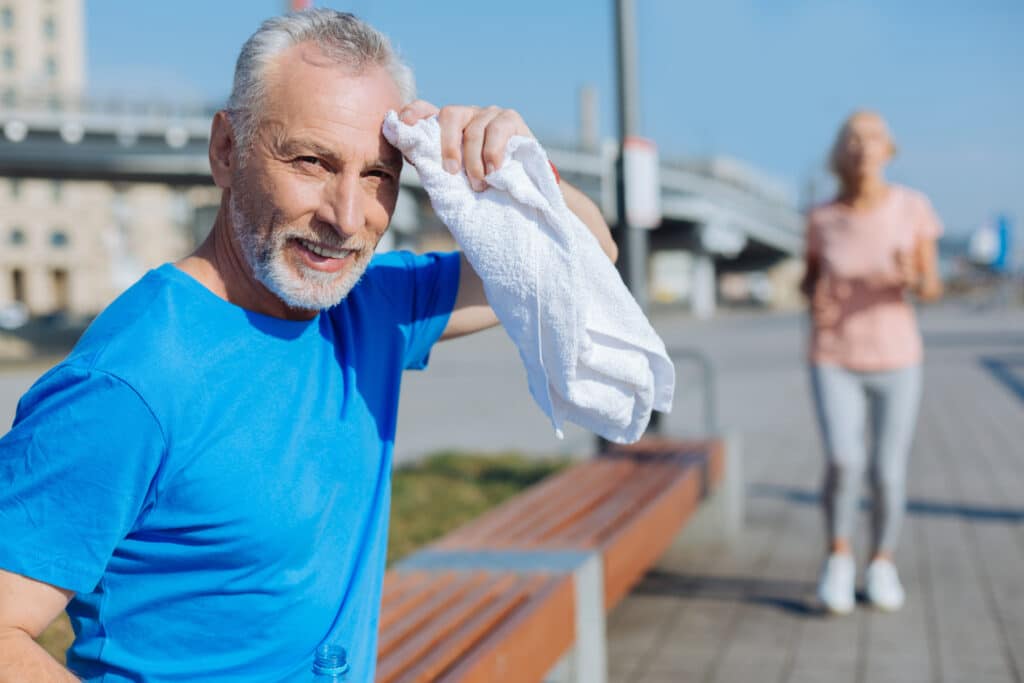Have you been feeling more tired lately? Do you run out of breath while walking up the stairs or doing other simple tasks?
After the COVID-19 quarantine, many people have found that they are less in shape than they used to be. In the last year, I have had an influx of patients reporting that they don’t feel as fit or physically capable as before the pandemic.
If this sounds like you, you’re not alone! Many older adults are still working their way back to their previous fitness levels.
Let’s explore what it means to be “out of shape” and discuss how to assess your current fitness level properly. Understanding where to start is the first step in creating a safe, balanced approach to regaining your fitness.
What it Means to be “Out of Shape”
Being “out of shape” might mean something different for everyone. For some, it means feeling weak or less able to do the things they love. For others, it might mean struggling with simple daily tasks like carrying groceries.
The pandemic led to a sedentary lifestyle for many older adults, resulting in muscle atrophy, loneliness, and a general sense of well-being decline.1
Being out of shape can manifest in different ways, including:
- Low cardiovascular endurance, or the ability of your heart and lungs to supply oxygen to your muscles
- Decreased muscular strength, or the ability of your muscles to exert force
- Limited flexibility, or the range of motion of your joints
- Less-than-optimal body composition, or proportion of fat to muscle.
For most people, being out of shape likely feels like a combination of any of these. Other symptoms you may experience when feeling out of shape include fatigue, shortness of breath, joint pain, or poor posture.
Low Cardiovascular Endurance
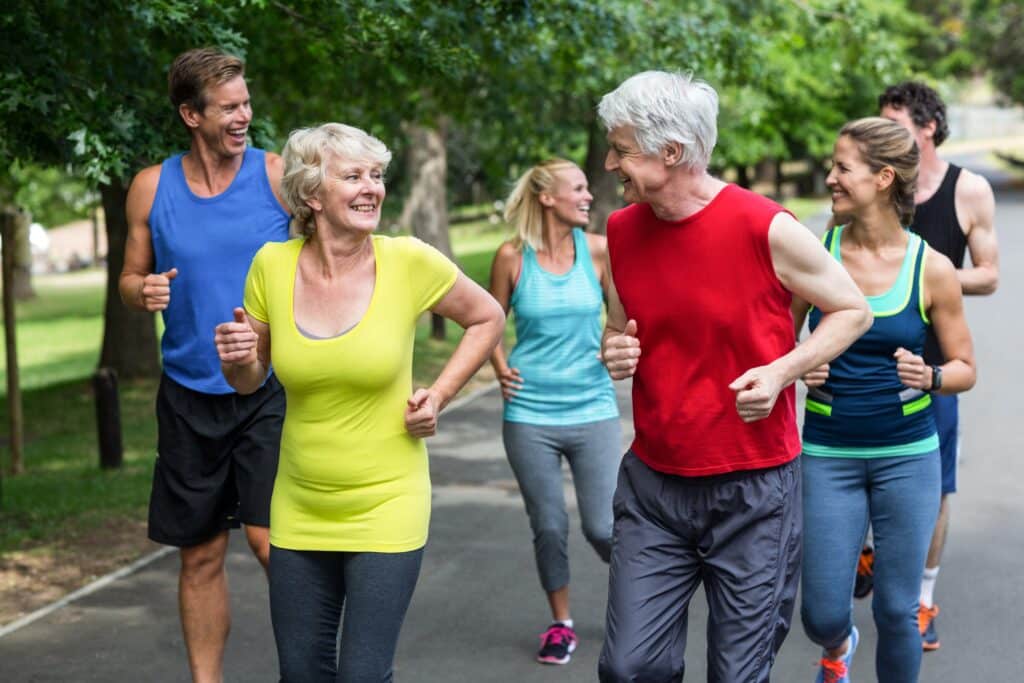
When you’re out of shape, your body isn’t as efficient at using oxygen to procure energy. This can make simple tasks, like walking up a flight of stairs or carrying groceries, feel much more challenging than they should be.
Your heart and lungs have to work harder to deliver oxygen to your muscles, which can cause you to feel short of breath and tired.
OUR RECOMMENDATION
A Fitness Coach on Your Wrist
There’s nothing quite like a fitness tracker to keep you motivated. “Getting in my steps” has become a familiar phrase to everyone. We like the FitBit Inspire 3 Fitness Tracker for its simplicity and bonus health tracking features. A narrow, basic screen keeps it simple by showing you what you want to know while exercising. It also does cool things like measuring your oxygen levels and tracking high, low or irregular heart rates.
Decreased Strength & Flexibility
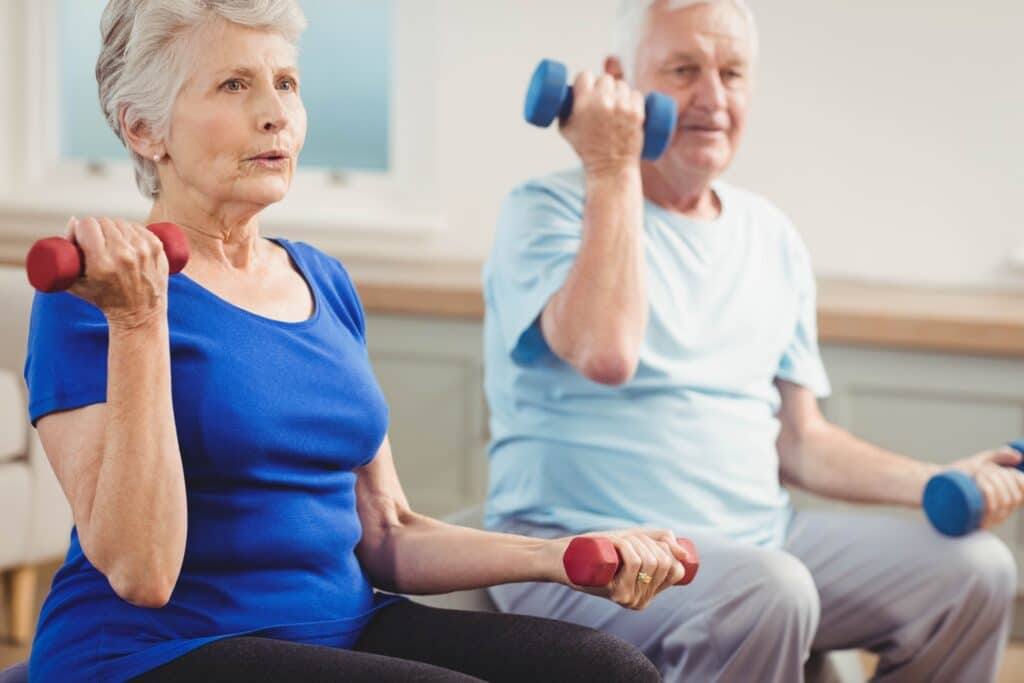
Additionally, when you’re out of shape, your muscles aren’t as strong as they should be. Even basic movements, like standing up from a chair or lifting a small object, can require unusual effort. Over time, this can lead to fatigue and weakness, further limiting your ability to do what you enjoy.
A sedentary lifestyle limits flexibility and mobility since your joints are not used as fully and often as needed to function correctly. Limited ability to use your body can lead to decreased movement or an increased risk for falls or other injuries.
Increased Disease Risk

Not only does being out of shape impact how you feel during your daily activities, but it can also increase the risk of chronic diseases, such as diabetes, heart disease, or osteoporosis. Increasing your activity level to improve your fitness level is one way to combat these serious health risks.2
As always, we encourage you to schedule regular checkups with your doctor to make sure you are making progress in your journey to get back in shape. Your doctor can provide a comprehensive and safe set of tools to ensure you take the right steps to meet your goals.
How To Assess If You Are Out of Shape
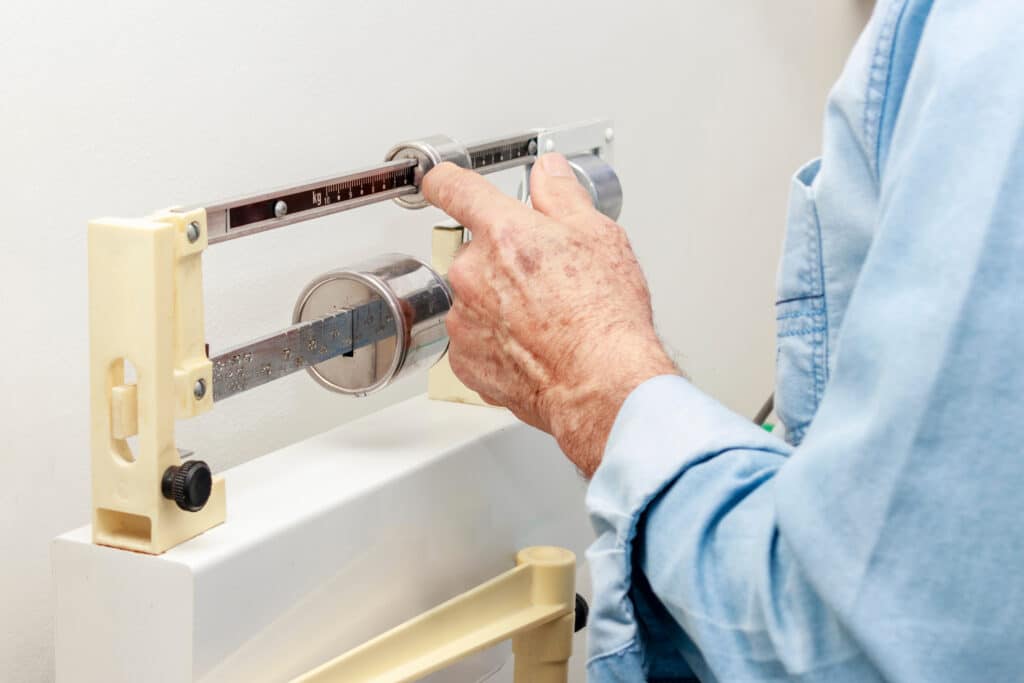
If you’re experiencing any of these symptoms, it’s important to remember that it’s not your fault; your body is simply telling you that it needs some extra help to get back into shape. With the right exercise program and support, you can regain your strength and energy to feel like yourself again.
Depending on your goals, interests, and abilities, there are various ways to assess your fitness level.
Objective measurements like weight or body fat measurements compare you to age-matched norms among your peers.
Subjective measures are based on what you’ve noticed about your abilities compared to your own history and perception of how you feel.
Some observational cues that indicate that you are out of shape include
- Feeling out of breath during physical activity,
- Having difficulty maintaining a good, upright posture
- Having a high resting heart rate or blood pressure.
- A prolonged recovery time from exercise or poor endurance,
- Increased muscle soreness after low-intensity physical activity.
The Five Times Sit-to-Stand Test
As a PT, I often use the five times sit-to-stand test to assess the physical fitness level of my older adult patients with mobility impairments. Since this test is simple and easy to complete at home, you can follow these instructions and compare your results to your age group below.
How to Do the Five Times Sit-to-Stand Test
To perform the test:
- Begin by sitting in a chair with your arms folded across your chest and your feet flat on the floor.
- Stand up and sit down from the chair five times as quickly as possible while maintaining proper form.
- Note: It is crucial to ensure that you do not use your arms to assist you in standing up or sitting down. Since this is a timed test, having a physical therapist, spouse, or friend test you to get an accurate reading is best.
Tests like this one have established norms for age group and gender, so you can compare your results to your peers to see how you rank. Alternatively, you can test yourself at the beginning of your journey and then at different intervals to track your progress.
The norms for the five times sit-to-stand test vary by age and gender. They can serve as a helpful reference point for evaluating an individual’s performance:
- For adults aged 60-69, the average time to complete the test is 11.4 seconds for men and 12.6 seconds for women.
- For adults aged 70-79, the average time is 12.6 seconds for men and 14.9 seconds for women.
- For adults aged 80-89, the average time is 17.1 seconds for men and 19.2 seconds for women.
It is important to note that while the Five Times Sit-to-Stand test is a valuable tool for assessing leg strength and functional capacity, it should not be used alone to determine an individual’s fitness level.
We recommend scheduling a consultation with a physical therapist or another medical professional to comprehensively assess your abilities, especially if you have concerns about your health.
Frailty
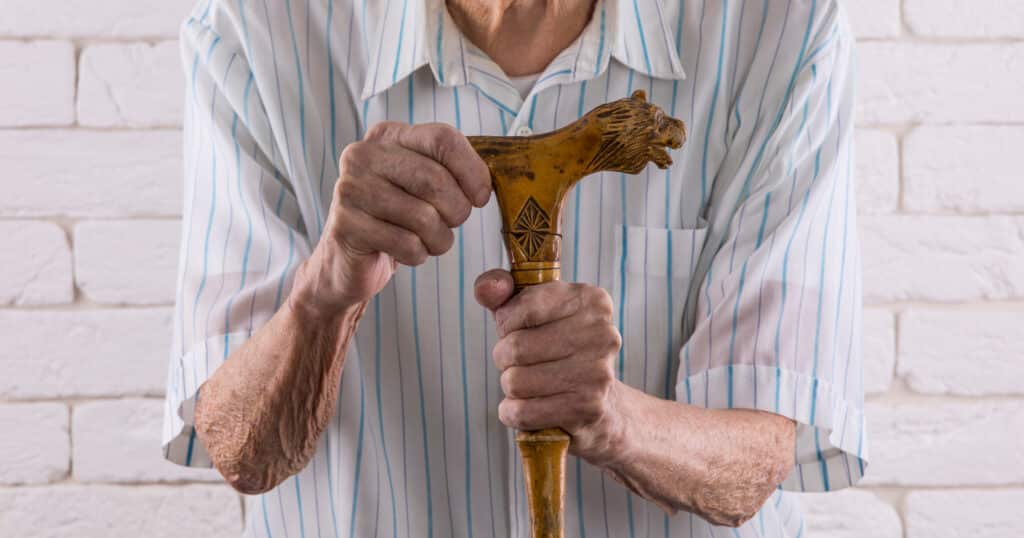
Frailty is characterized by an excessive and dangerous vulnerability to environmental stress, often leading to injury or preventable illness.9
Older adults who were more active before the lockdown experienced a smaller decline in physical activity and less increase in body weight than those who were more frail.3
If you are frail or have pre-existing health conditions, pain, or specific limitations, it’s important to consult your doctor before starting an exercise program. Your doctor can help identify risks or precautions, recommend appropriate modifications, or provide referrals.
Other Barriers to Exercise
Other barriers to success in a fitness program include poor social support and environmental factors such as weather or lack of access to facilities. Attempting to address these before beginning a program is ideal. It can help you to get back on track sooner and more consistently.4
Joining a walking club or a local seniors fitness group is a great way to be social and stay in shape. If you can access a gym or fitness club, consider attending senior-friendly classes like step aerobics or tai chi.
It may also be appropriate to seek assistance from senior-oriented personal trainers or physical therapists in your area.
The Role of Nutrition & Exercise
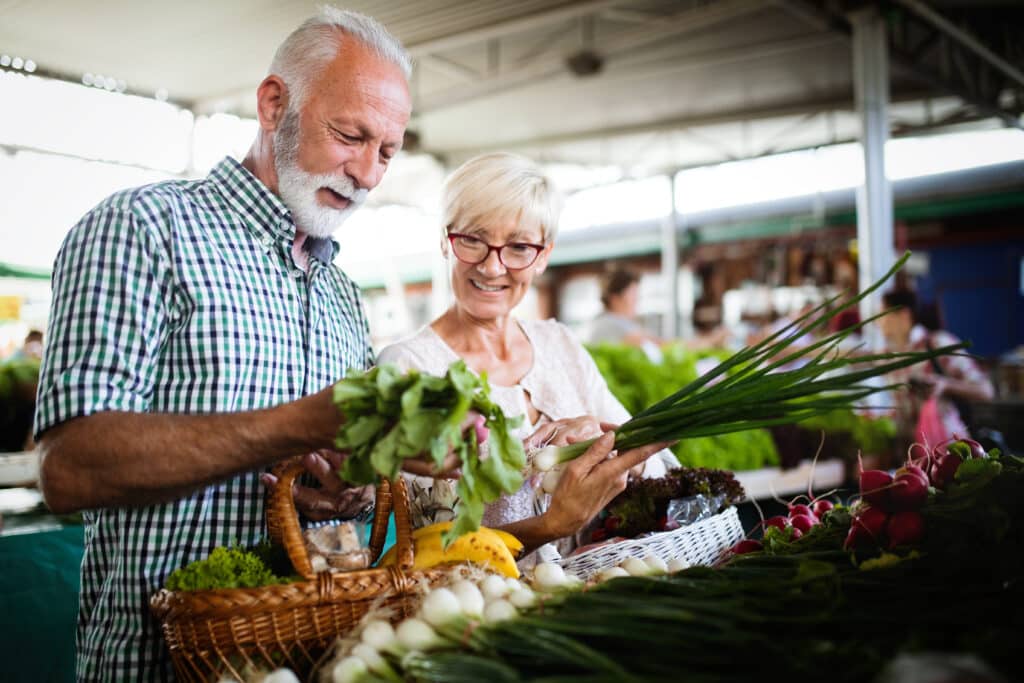
Maintaining a regular exercise routine alongside a healthy diet is pivotal in your journey to getting back in shape.
While exercising regularly and eating right have health benefits, they can greatly impact your well-being, staving off cardiovascular disease, lowering blood pressure, and improving your quality of life.
Poor cardiovascular health has been linked to a variety of preventable diseases. Combined with the Standard American Diet (SAD) — high in processed oils, fats, and sugar — a lack of regular exercise can lead to illness and early death.
Exercise science shows that eating healthy and cultivating a daily fitness routine can increase the resilience of your heart and blood vessels while also improving your mood, confidence, and strength.
Did You Know Science Doesn’t Support Dieting?
We are big supporters of NOT dieting at Physio Ed. The result of every dieting plan nearly always results in WEIGHT GAIN over a three-year period. Not only that, but it makes us feel terrible about ourselves when we don’t succeed reaching our goals. The diet industry is filled with empty promises.
Intuitive eating is the guidebook we recommend at all our nutrition workshops. It teaches why diets never work, how to read your own cues for hunger, identify challenges, and make small, permanent changes that add up over time. We couldn’t recommend this book more.
How To Get Back In Shape
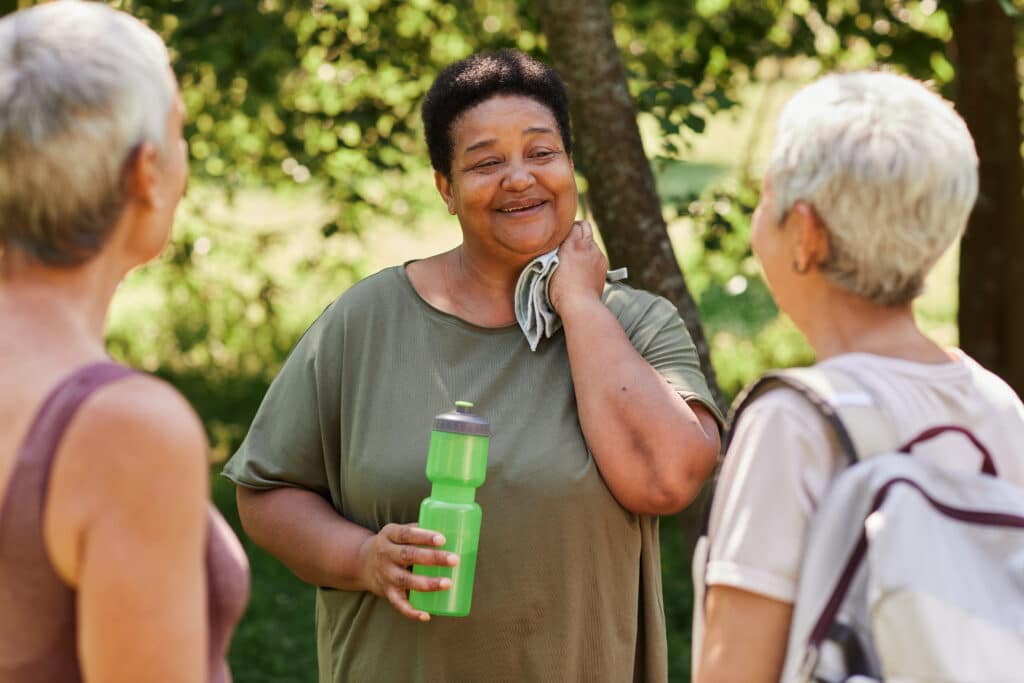
Don’t know where to get started? Here are some general guidelines to help you start exercising safely and effectively:
Start slowly and gradually increase your exercise intensity and duration.
Starting with a high level of intensity can lead to burnout or even injury. It’s important to be compassionate with yourself as you get started so that you can build healthy and effective exercise habits that last.
A gradual and consistent approach can prevent injury, reduce soreness, and improve motivation and confidence. Try to increase your exercise volume by, at most, 10% per week.
Simply put, that would mean adding an extra tenth of a mile to your daily walking distance, or eleven instead of ten pushups!
Incorporate a mix of cardiovascular, strength training, and balance exercises.
Cardiovascular exercises like walking, cycling, or swimming can improve your heart and lung function, increase endurance and boost your mood.
Strength training exercises, like lifting weights, doing bodyweight exercises, or using resistance bands, can build muscle, increase bone density, and enhance metabolism. Balance exercises can improve physical function and reduce the risk of falls.5
Choose Activities You Enjoy
Exercise doesn’t have to be boring or painful. I recommend that my patients find activities that they enjoy and that fit into their lifestyles. This will help you to stay consistent and motivated.
For example, dancing, hiking, or yoga are fun and engaging activities many seniors enjoy.6
You can also vary your workouts to avoid boredom and challenge your body in different ways.
Set realistic goals to track your progress
Having a specific plan in mind can be helpful, such as training for a 5K, doing ten push-ups, or walking for 30 minutes straight.
However, ensure your goal is realistic and achievable, given your fitness level, time commitment, and other factors.5
You can also track your progress using a fitness app or journal or plan a workout in a group setting. These can help you stay accountable, motivated, and proud of your accomplishments.7
Prioritize rest and recovery to prevent injury and burnout
Exercise is essential, but so is rest! Your body needs time to recover and repair after exercise, especially if you are new to it or are doing more intense workouts.
Ensure you sleep well, eat a balanced diet, and take breaks between workouts. You can also use active recovery techniques like stretching, foam rolling, or yoga to help your muscles recover and improve flexibility.
Our Recommendation
Resistance bands are one of the best ways to get back into shape. Not only are they inexpensive compared to other exercise equipment, but they take up less space, travel well, and can be used in just about any setting. You can dial them in based on your level as well, which makes them perfect for building up your endurance and strength over time. It has everything you need and more to continue your fitness journey.
This kit is one that we particularly like. It comes with many extras at no additional cost compared to other kits. You’ll also find plenty of free classes in our fitness library that use these items, so now’s the time to get started!
Summary
In the wake of the COVID-19 pandemic, many of us have noticed a decline in our physical fitness, confronting challenges such as diminished endurance, strength, and flexibility. This article delves into the nuanced reality of being “out of shape” and offers a compassionate guide to assessing one’s fitness level and embarking on a journey towards regaining physical health. Highlighting the importance of a balanced approach that includes diet, exercise, and the joy of movement, it provides practical advice and encouragement for older adults striving to reclaim their vitality. From understanding the symptoms and risks associated with decreased physical activity to embracing a gradual, enjoyable, and holistic exercise regimen, this guide is a beacon for anyone looking to improve their well-being in a post-pandemic world.
Key Takeaways
- Many people feel less fit post-COVID-19 quarantine, experiencing decreased cardiovascular endurance, muscular strength, flexibility, and optimal body composition.
- Symptoms of being out of shape include fatigue, shortness of breath, joint pain, and poor posture.
- Being out of shape increases the risk of chronic diseases such as diabetes, heart disease, or osteoporosis.
- Assessing your fitness level can involve objective measurements (like weight or body fat), subjective measures, and observational cues.
- The Five Times Sit-to-Stand Test is a simple at-home assessment tool for evaluating leg strength and functional capacity.
- Frailty and barriers such as poor social support and environmental factors can hinder getting back into shape.
- A combination of diet and exercise is crucial for improving fitness and preventing disease.
- Starting slowly, incorporating a mix of exercises, enjoying chosen activities, setting realistic goals, and prioritizing rest are key strategies for getting back into shape.
FAQs
How can I tell if I’m out of shape?
Being out of shape often manifests through increased fatigue during routine activities, shortness of breath with minimal exertion, persistent joint pain, and difficulty maintaining good posture. Observing changes in physical performance, such as a heightened effort required for tasks previously completed easily, or changes in body composition, can also indicate a decrease in fitness levels. Objective measures like body weight or fat percentage, alongside these subjective experiences and observational cues, provide a comprehensive understanding of your current fitness state.
What are the risks of being out of shape?
Remaining out of shape extends beyond immediate discomfort, posing long-term health risks including heightened susceptibility to chronic diseases such as diabetes, cardiovascular disease, and osteoporosis. The decline in physical capability can also negatively impact daily life, making simple tasks increasingly challenging and diminishing overall quality of life.
How can I assess my fitness level at home?
To assess your fitness level at home, simple and accessible tests like the Five Times Sit-to-Stand Test offer valuable insights into your physical condition, specifically evaluating leg strength and endurance. This test requires you to stand from a seated position five times as quickly as possible without using your arms, with performance times compared to normative age and gender data. Such assessments, combined with monitoring daily physical experiences and capabilities, can effectively gauge your fitness level.
What obstacles might impede my progress in getting back in shape?
Several factors can hinder progress towards regaining fitness, including pre-existing health conditions, frailty, environmental constraints, and social or psychological barriers such as limited support or motivation. Addressing these challenges early on by consulting healthcare professionals and seeking supportive networks can facilitate a more effective and enjoyable return to fitness.
Where should I start in my journey to regain fitness?
Initiating a fitness regimen should be a gradual process, starting with activities well within your current capability and progressively increasing intensity and duration to avoid injury and encourage sustainable habit formation. Incorporating a diverse range of activities — including cardiovascular exercises, strength training, and balance-focused exercises — enhances overall fitness and prevents monotony. Selecting enjoyable activities and setting achievable, meaningful goals can significantly enhance motivation and adherence to your fitness plan.
How significant is the role of diet in improving my fitness?
A balanced and nutritious diet plays a crucial role in supporting your fitness journey, providing the necessary energy for physical activity and aiding in recovery and muscle repair. Healthy dietary choices can complement your exercise efforts, improving cardiovascular health, aiding in weight management, and enhancing your overall well-being. Integrating regular physical activity with a thoughtful dietary approach is fundamental to achieving and maintaining optimal fitness levels.
Resources
- Marzetti, E., et al. (2020). When COVID-19 affects muscle: effects of quarantine in older adults. Aging Clinical and Experimental Research, 32(8), 1599-1604. https://www.ncbi.nlm.nih.gov/pmc/articles/PMC7385699/
- Chodzko-Zajko WJ, Proctor DN, Fiatarone Singh MA, et al. American College of Sports Medicine position stand. Exercise and physical activity for older adults. Med Sci Sports Exerc. 2009 Jul;41(7):1510-30. doi: 10.1249/MSS.0b013e3181a0c95c.
- Barzilay, J., et al. (2021). The impact of COVID-19 lockdown on physical activity and body weight among older adults: The moderating role of frailty. BMC Public Health, 21(1), 1-10. https://bmcpublichealth.biomedcentral.com/articles/10.1186/s12889-021-11523-z
- Franco, M. R., Tong, A., Howard, K., Sherrington, C., Ferreira, P. H., Pinto, R. Z., & Ferreira, M. L. (2015). Older people’s perspectives on participation in physical activity: a systematic review and thematic synthesis of qualitative literature. British Journal of Sports Medicine, 49(19), 1268-1276. https://doi.org/10.1136/bjsports-2014-094015
- Cadore EL, Rodríguez-Mañas L, Sinclair A, Izquierdo M. Effects of different exercise interventions on risk of falls, gait ability, and balance in physically frail older adults: a systematic review. Rejuvenation Res. 2013 Apr;16(2):105-14. doi: 10.1089/rej.2012.1397. https://www.liebertpub.com/doi/10.1089/rej.2012.1397
- Chase, J. A., Conn, V. S., & Taylor, C. M. (2019). Interventions to increase physical activity among older adults: a meta-analysis. The Gerontologist, 59(4), e284-e293. https://doi.org/10.1093/geront/gny113
- Boulton, E., Booth, J., & Hawley-Hague, H. (2021). A scoping review of physical activity interventions for older adults aligned with the Global Action Plan on Physical Activity (GAPPA). International Journal of Behavioral Nutrition and Physical Activity, 18(1), 1-22. https://doi.org/10.1186/s12966-021-01140-9
- Center of Disease Control (CDC) (2016, September 16). More than 1 in 4 US adults over 50 do not engage in regular physical activity. CDC.gov. https://www.cdc.gov/media/releases/2016/p0915-physical-activity.html#:~:text=Despite%20the%20many%20benefits%20of,needed%20for%20daily%20life%20activities.
- Proietti M, Cesari M. Frailty: What Is It? Adv Exp Med Biol. 2020;1216:1-7. doi: 10.1007/978-3-030-33330-0_1. PMID: 31894541.

